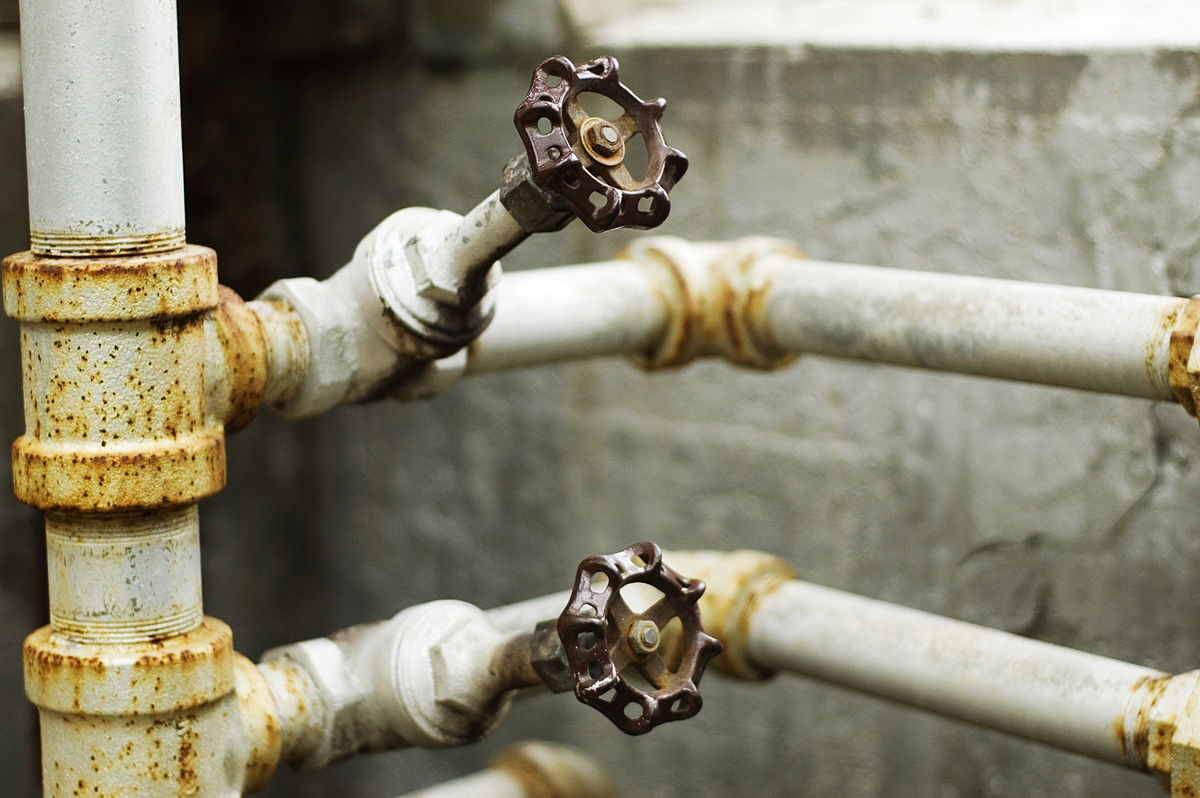Valves
Valves are mechanical devices that control the flow of fluids such as gas, liquid, fluidised solids, slurries, and so on, by opening, closing or partially obstructing a passage.
Some common household examples of valves include:
- A tap that when turned opens a valve to release pressurised water.
- A toilet that when flushed opens two valves – one that allows water to escape, and another that refills the toilet with more water.
- A gas cooker hob that opens a valve to allow more gas to increase the flame size.
Simple valves are typically made up of several parts; a solid metal outer casing, a rubber or plastic inner seal, and a body which opens and closes, fitting into a seat.
An automated or manual mechanism is used to open and close valves. For high-pressure flow pipework, opening and closing manually can be physically difficult, often requiring a long lever or large wheel. Big valves can be operated using hydraulic rams.
There are several different types of valves, including:
- Ball valve: A hollowed-out ball sits inside a pipe obstructing the flow and swivelling through 90-degrees when turned.
- Butterfly valve: A disc sits inside a pipe and swivels sideways or upright.
- Cock or plug: A cone-shaped plug moves to one side when a wheel or handle is turned.
- Gate or sluice: Metal gates are lowered across pipes, usually only capable of being fully open or fully closed.
- Globe: When turned a valve is screwed in, such as with a tap.
- Needle: A long, sliding needle regulates fluid flow, such as in central heating systems.
- Spool: Valves slide backwards and forwards to direct fluid flow around a pipe circuit, such as in hydraulic systems.
For more information see: Types of valve.
[edit] Related articles on Designing Buildings
- Actuator.
- A guide to installing thermostatic mixing valves: what, why and how.
- BSRIA announces 2021 European HVAC field device study.
- BSRIA publishes new edition of BG29.
- BSRIA study: The market for European Field Devices.
- Closed Systems Control Association.
- Control valve.
- Differential pressure control valve.
- Float valve.
- Gasket.
- Mechanical, electrical and plumbing MEP.
- Pipework.
- Pipework defects, ventilation and airflow rates.
- Pressure independent control valves.
- Pressure-relief valve.
- Stop valve.
- Tap.
- Thermostatic mixing valve.
- Types of valve.
- Water hammer.
- What makes a good PICV?
Featured articles and news
Latest Build UK Building Safety Regime explainer published
Key elements in one short, now updated document.
UKGBC launch the UK Climate Resilience Roadmap
First guidance of its kind on direct climate impacts for the built environment and how it can adapt.
CLC Health, Safety and Wellbeing Strategy 2025
Launched by the Minister for Industry to look at fatalities on site, improving mental health and other issues.
One of the most impressive Victorian architects. Book review.
Common Assessment Standard now with building safety
New CAS update now includes mandatory building safety questions.
RTPI leader to become new CIOB Chief Executive Officer
Dr Victoria Hills MRTPI, FICE to take over after Caroline Gumble’s departure.
Social and affordable housing, a long term plan for delivery
The “Delivering a Decade of Renewal for Social and Affordable Housing” strategy sets out future path.
A change to adoptive architecture
Effects of global weather warming on architectural detailing, material choice and human interaction.
The proposed publicly owned and backed subsidiary of Homes England, to facilitate new homes.
How big is the problem and what can we do to mitigate the effects?
Overheating guidance and tools for building designers
A number of cool guides to help with the heat.
The UK's Modern Industrial Strategy: A 10 year plan
Previous consultation criticism, current key elements and general support with some persisting reservations.
Building Safety Regulator reforms
New roles, new staff and a new fast track service pave the way for a single construction regulator.
Architectural Technologist CPDs and Communications
CIAT CPD… and how you can do it!
Cooling centres and cool spaces
Managing extreme heat in cities by directing the public to places for heat stress relief and water sources.
Winter gardens: A brief history and warm variations
Extending the season with glass in different forms and terms.
Restoring Great Yarmouth's Winter Gardens
Transforming one of the least sustainable constructions imaginable.
























Comments